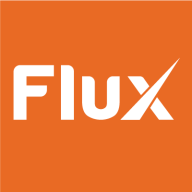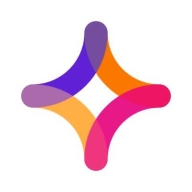

Jitterbit Harmony and Flux are integration platforms competing to streamline business processes. Jitterbit Harmony has an advantage in pricing and customer support, whereas Flux offers a superior feature set, appealing to those willing to invest more and undergo a steeper learning curve.
Features: Jitterbit Harmony includes advanced data integration, seamless connectivity, and a user-friendly experience, excelling in complex integrations with a straightforward approach. Flux offers extensive automation capabilities, advanced scheduling functions, and is preferred for environments with intricate workflows, providing a comprehensive toolset for complex enterprise needs.
Ease of Deployment and Customer Service: Jitterbit Harmony's cloud-based model simplifies setup and features responsive customer support for efficient troubleshooting. Flux requires a more hands-on local deployment, suitable for organizations needing custom configurations and detailed assistance, though this may extend deployment time. Jitterbit's agile deployment is complemented by strong support, while Flux provides more tailored but time-consuming deployment experiences.
Pricing and ROI: Jitterbit Harmony offers a cost-effective setup with favorable ROI, thanks to its streamlined pricing model, making it accessible to budget-conscious businesses. Flux involves higher setup costs, reflecting an investment in its comprehensive features. Despite the higher expense, Flux's ability to meet complex demands justifies the investment for entities prioritizing advanced integration capabilities.
| Product | Market Share (%) |
|---|---|
| Flux | 0.2% |
| Jitterbit Harmony | 0.3% |
| Other | 99.5% |

| Company Size | Count |
|---|---|
| Small Business | 8 |
| Midsize Enterprise | 3 |
| Large Enterprise | 1 |
Flux is a technology-driven tool designed to optimize workflow management, offering an agile approach and seamless integration to enhance project execution for businesses.
Designed for teams aiming to streamline processes, Flux provides robust features supporting efficient data flow and task management. Its architecture enables users to track projects, automate tasks, and improve communication among team members. The platform's comprehensive analytics offer insights, driving effective decision-making and boosting productivity.
What are the key features of Flux?Flux finds applications across industries such as finance, healthcare, and IT, where workflow automation is crucial. By tailoring automation and analytics, companies achieve marked improvements in operational efficiency, adapting processes for specific industry demands and ensuring compliance with sector standards.
Jitterbit Harmony offers an advanced integration platform that simplifies data transformation, helps users quickly connect apps, and automates workflows, streamlining complex business processes efficiently.
Designed to meet the high demands of modern businesses, Jitterbit Harmony enables seamless integration across cloud and on-premise environments. By leveraging its powerful tools and user-friendly design, users can accelerate innovation, reduce operational costs, and enhance productivity. It bridges the gap between traditional and emerging technologies, ensuring organizations can adapt quickly to market changes and remain competitive.
What are the key features of Jitterbit Harmony?Jitterbit Harmony finds its application across numerous industries, from enhancing data integration in the healthcare sector to optimizing supply chain logistics in manufacturing. It supports financial institutions by improving transaction processing and facilitates real-time data connectivity in retail environments, making it a versatile choice for diverse industries looking to innovate rapidly.
We monitor all Workload Automation reviews to prevent fraudulent reviews and keep review quality high. We do not post reviews by company employees or direct competitors. We validate each review for authenticity via cross-reference with LinkedIn, and personal follow-up with the reviewer when necessary.